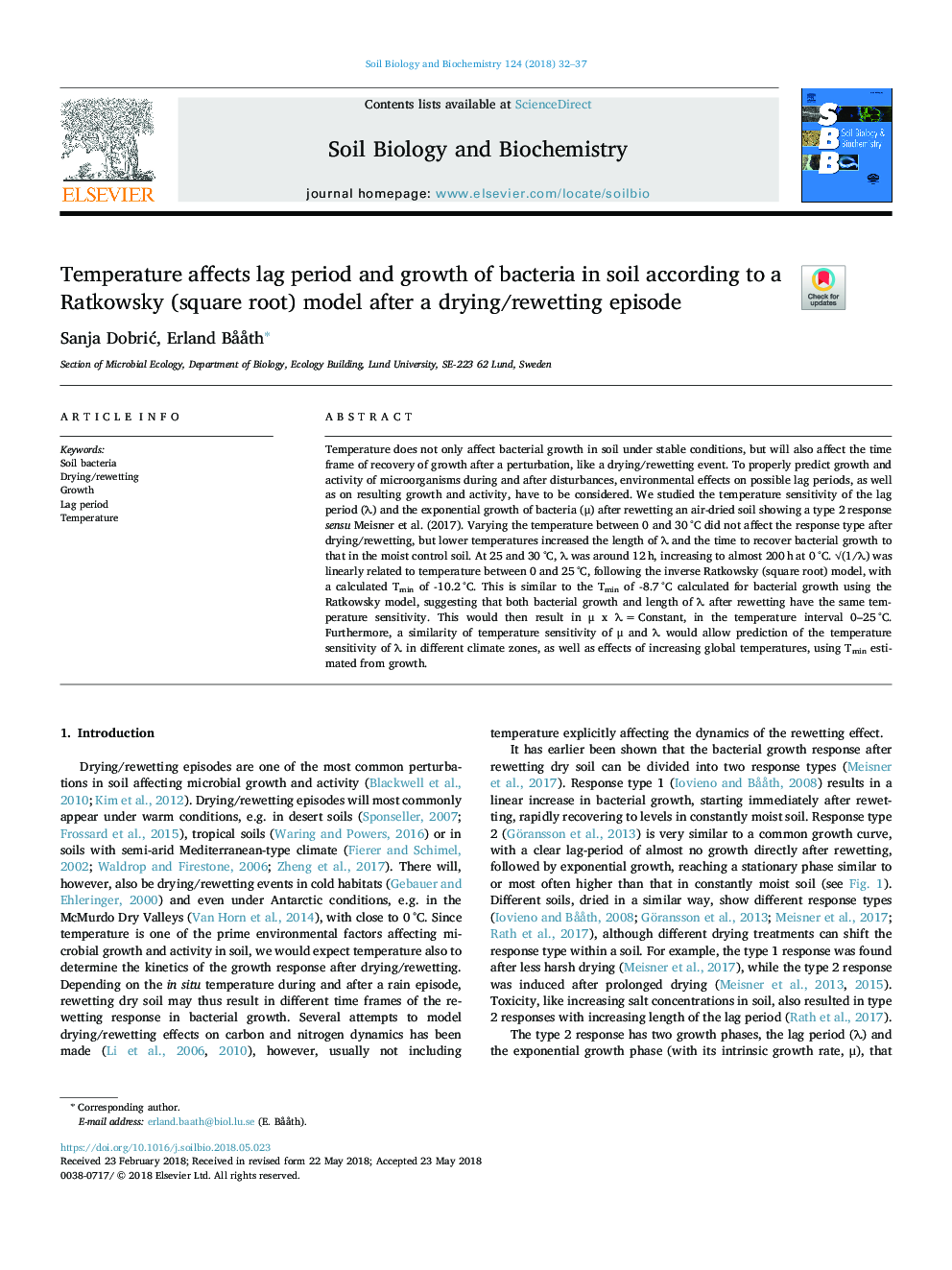| Article ID | Journal | Published Year | Pages | File Type |
|---|---|---|---|---|
| 8362531 | Soil Biology and Biochemistry | 2018 | 6 Pages |
Abstract
Temperature does not only affect bacterial growth in soil under stable conditions, but will also affect the time frame of recovery of growth after a perturbation, like a drying/rewetting event. To properly predict growth and activity of microorganisms during and after disturbances, environmental effects on possible lag periods, as well as on resulting growth and activity, have to be considered. We studied the temperature sensitivity of the lag period (λ) and the exponential growth of bacteria (μ) after rewetting an air-dried soil showing a type 2 response sensu Meisner et al. (2017). Varying the temperature between 0 and 30â¯Â°C did not affect the response type after drying/rewetting, but lower temperatures increased the length of λ and the time to recover bacterial growth to that in the moist control soil. At 25 and 30â¯Â°C, λ was around 12â¯h, increasing to almost 200â¯hâ¯at 0â¯Â°C. â(1/λ) was linearly related to temperature between 0 and 25â¯Â°C, following the inverse Ratkowsky (square root) model, with a calculated Tmin of -10.2â¯Â°C. This is similar to the Tmin of -8.7â¯Â°C calculated for bacterial growth using the Ratkowsky model, suggesting that both bacterial growth and length of λ after rewetting have the same temperature sensitivity. This would then result in μ x λâ¯=â¯Constant, in the temperature interval 0-25â¯Â°C. Furthermore, a similarity of temperature sensitivity of μ and λ would allow prediction of the temperature sensitivity of λ in different climate zones, as well as effects of increasing global temperatures, using Tmin estimated from growth.
Related Topics
Life Sciences
Agricultural and Biological Sciences
Soil Science
Authors
Sanja DobriÄ, Erland Bååth,
